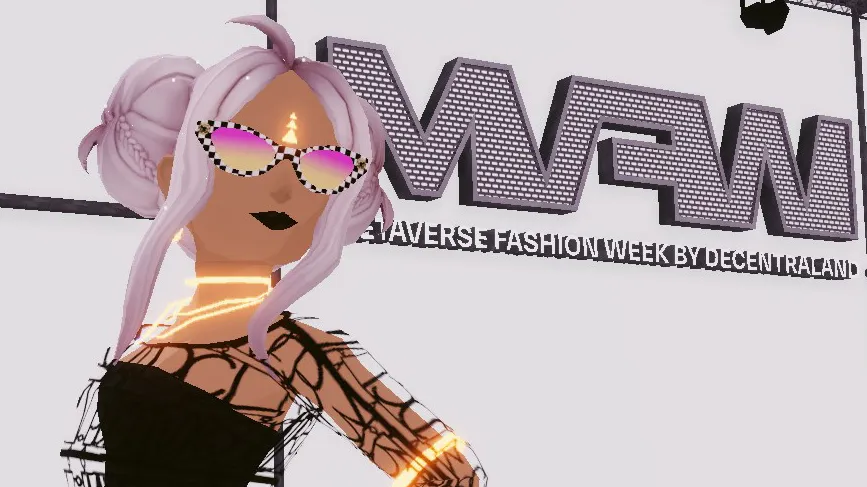Last week, Metaverse Fashion Week took its second-ever strut down the virtual runway, a year after debuting in the thick of 2022’s metaverse frenzy.
A lot can change in a year.
The event, hosted primarily in metaverse gaming platform Decentraland, saw a massive drop in attendance on its second run. By Decentraland’s own admission, Metaverse Fashion Week (MFW) unique visitors dropped from 108,000 in 2022 to just 26,000 this year.
According to third-party metaverse analytics firm GEEIQ, however, last week’s events—which featured presences from Dolce & Gabbana, Balmain, Coach, and Tommy Hilfiger—garnered less than 9,000 unique visitors, a staggering 92% dropoff from last year.
While dismal, those figures are not necessarily a shock to anyone keeping track of the ongoing deterioration of the metaverse in the public eye. Due to brutal market conditions, the repeated humiliations suffered by self-appointed metaverse poster child Meta, and lackluster response to other metaverse gaming platforms deemed premature, the “m” word has in recent months become a toxic one, best avoided at all costs.
“No one cares about the metaverse anymore,” Charles Hambro, co-founder and CEO of GEEIQ, told Decrypt. “But the reality of the situation is, more people are gaming this year than last year. So one needs to ask the question: is it the metaverse that’s failing, or just particular virtual environments that haven’t been built for purpose?”
Hambro is of the belief that many brands and platforms operating in the metaverse have not yet tapped into the novel medium’s full potential.
“This is not like Instagram," he said, "where you have to just think about aesthetics—3D virtual environments require a whole other skill set.”
Case in point: consider that MFW’s top brand this year in terms of “dwell time,” a coveted metric measuring minutes spent in an online experience, was not Gucci, Coach, or any other glossy, celebrity-friendly label known to dominate in-person fashion weeks. It was Ben Bridge, a jewelry chain typically found in suburban shopping malls.
Ben Bridge garnered 47,695 minutes of dwell time at MFW last week, according to GEEIQ. Adidas and Coach, brands with far larger global reputations, both placed in the low 30,000s, by comparison.
Even more eyebrow-raising is the degree to which that dwell time was concentrated. The average Ben Bridge MFW visitor spent 14 minutes engaging with the company’s virtual store, according to GEEIQ—a near unheard-of statistic in the world of online advertising, where social media-originated brand impressions often clock in around three seconds.
How did Ben Bridge manage to keep consumers so engaged? The jeweler, unlike many other brands at MFW, offered visitors the ability to participate in elaborate, gamified “quests” throughout a virtually reconstructed Ben Bridge store. Furthermore, it gave away 11 types of exclusive digital wearables to users who engaged with and completed those quests.
Got All three questions correct! pic.twitter.com/JMZbe2ruTH
— 👽🅰️ 👁 K∞ 👁 (@ktr203) March 31, 2023
Those sorts of captivating, gamified engagements with consumers will become increasingly critical as advertisers come to see the value of immersive technology over existing modes of generating online engagement, according to Hambro.
“Brands now want to have a deeper, more enriched experience with their consumers,” he said. “A three-second impression is not a deep and enriched experience.”
Last year at MFW, and this year as well, most brands opened digital storefronts and showcased virtual versions of their wares, but didn’t do much beyond those standard measures to actively court visitors.
“There has to be more creativity within what platforms are offering as tools, and brands deliver as an experience,” Richard Hobbs, CEO of digital fashion platform BNV, told Decrypt. “Just having a gallery of products with minimal interaction is not going to create excitement and engagement.”
It appears that just because the novelty of the metaverse has worn off, it doesn’t mean that virtual worlds lack massive potential to engage and entice users. Unlocking that potential, however, may take more now than just showing up.

